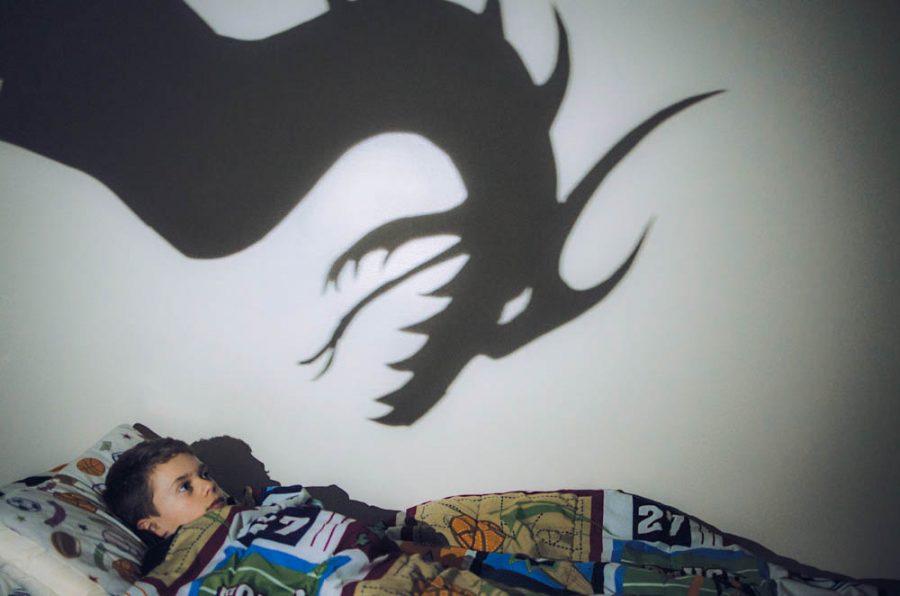Sophomore Sarah Emerson opened her eyes, looking around in fear. She tried for what seemed like an eternity to find an escape from the darkly-lit room but was unable to move even the most minute of her muscle fibers. She felt the room bearing its weight down on her, pressurizing her to a completely dormant state.
Then, she saw him.
“One Saturday morning I woke up, and when I looked out my window there was a guy peering into my room just standing there watching me,” Emerson said. “I started freaking out and struggling as the guy started to tap on my window then pound a fist on it. And right before it ended, he smiled at me and said, ’I’ll be back’ and ran away.”
While this might seem like a scene from a horror movie, it is actually a sleep disorder known as sleep paralysis. The man who Emerson saw was +a hallucination; a common sight for victims. For those who experience the phenomenon, it can be a very disturbing and frightening experience.
“Sleep paralysis (SP) is a state in which the physiology of REM sleep intrudes into wakefulness. The major physiological element is a limp paralysis – loss of muscle tone,” sleep paralysis expert David Hufford said in an email interview. “In REM, that prevents you from waking yourself up by acting out your dreams.There are several factors that make SP more likely. E.g. lack of sleep, especially lack of dreaming, makes the REM cycle stronger because we need REM sleep.”
Three million people in the United States experience the condition each year, according to a report from Mayo Clinic. While a percentage of people are simply unable to move or speak in episodes, many, including Emerson, report accompanying hallucinations, whether it be a horrifying creature or even a deceased relative.
“It [is] a very terrifying experience, and what seems like agonizing hours is mere minutes. And all you can do is sit there and wait,” Emerson said. “I remember the first time just trying to thrash forever and every time I would I’d hear loud cracks or banging. All I could think was that it wouldn’t ever end and I’d be trapped in my own body.”
While some victims can realize soon enough that they are only experiencing an episode, accompanying hallucinations can sometimes seem terrifyingly real. For junior Griffin Strong, his episodes can even get physical, reaching an apex of disturbing hallucinations.
“The scariest story [I have] is when I woke up, couldn’t move and felt someone running their hand over my back,” Strong said. “Finally, I was able to move. [When] I turned around, my room was empty.”
Although sleep paralysis has no true cure, victims are able to take several steps to cope with the resulting trauma. Hufford went on to explain some of these methods.
“Most cultures have spiritual remedies and protections because for most people it seems like a frightening spiritual experience, and it often includes the sense of an evil presence in the room,” Hufford said. “Non-spiritual things include getting adequate sleep and not sleeping on your back.”
For Emerson, social support is the best way to deal with the condition. She was fortunate to have a friend who helped her go through deal with mild post-traumatic stress.
“Over the summer it got bad, so [my friend] started calling me at night so that I wouldn’t feel alone,” Emerson said. “That’s helped a lot, and it’s nice to have someone there if it does happen.”
Despite the struggles Emerson faced with her sleep paralysis experiences, she believes it has helped her learn some valuable lessons on patience.
“There’s not a way to stop sleep paralysis; you just have to wait it out. Knowing what it is keeps me more calm now,” Emerson said. “Personally, I only hear things when I struggle, so keeping calm is important. It makes things easier for me if I just breathe and don’t try to fight it.”
Categories:
Sleep paralysis prohibits tranquil slumber
December 30, 2016
Sleep paralysis first appears in the teen years and occurs most frequently in the 20s and 30s. It is also a symptom of narcolepsy. (Source: sleepeducation.org)
0
More to Discover













































































